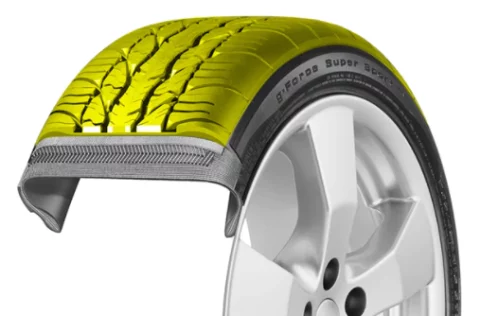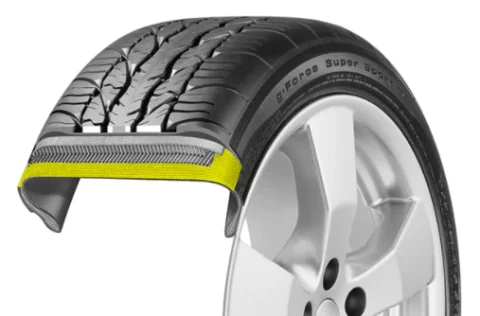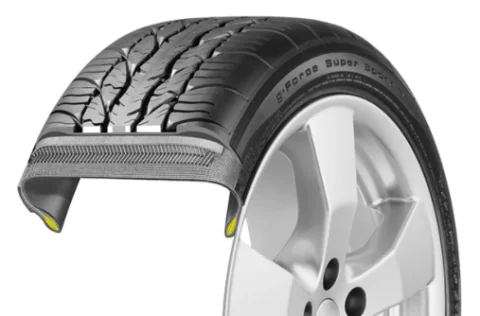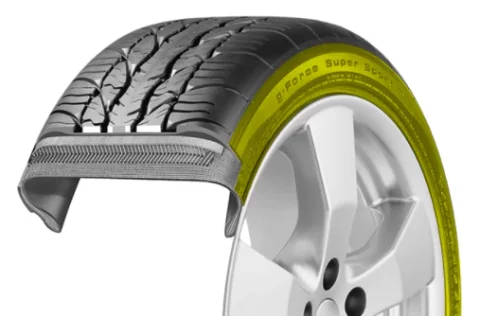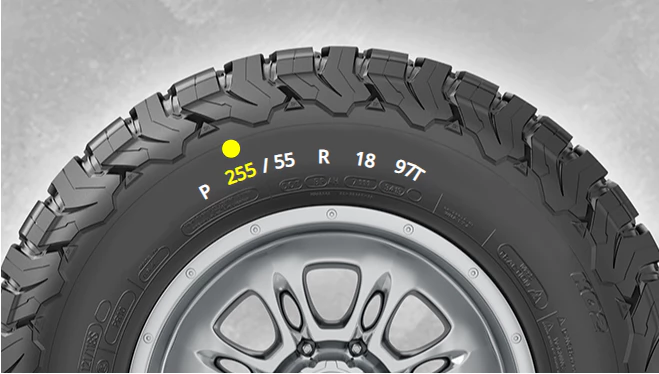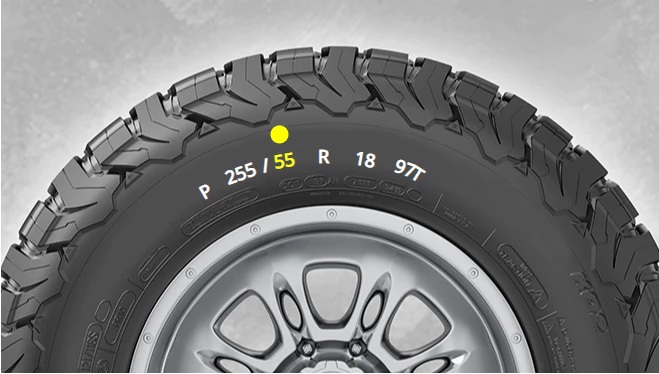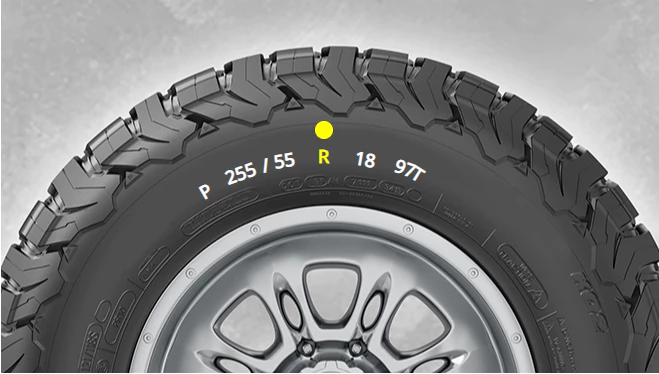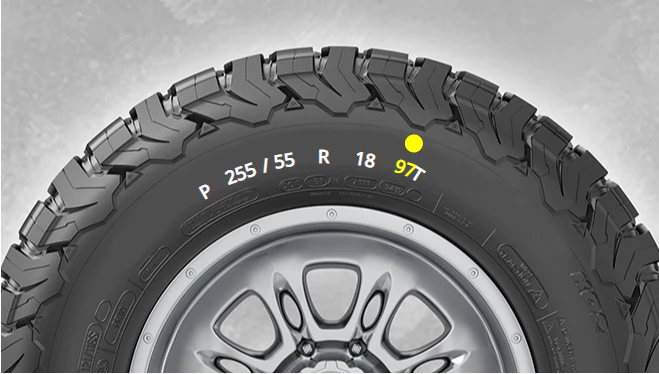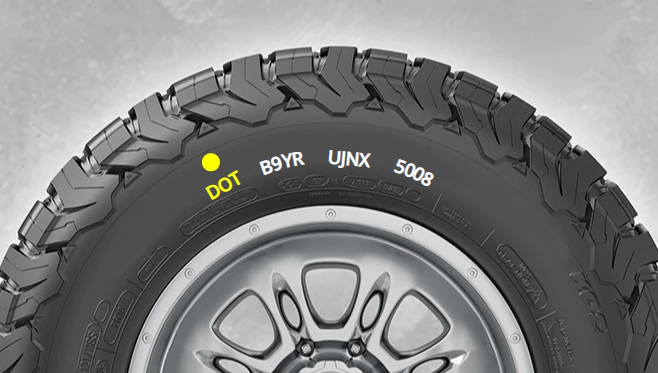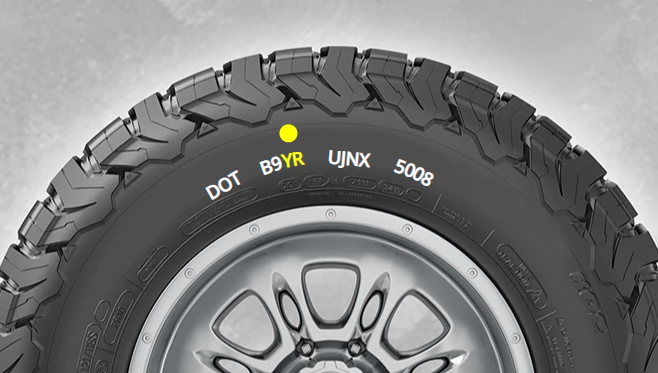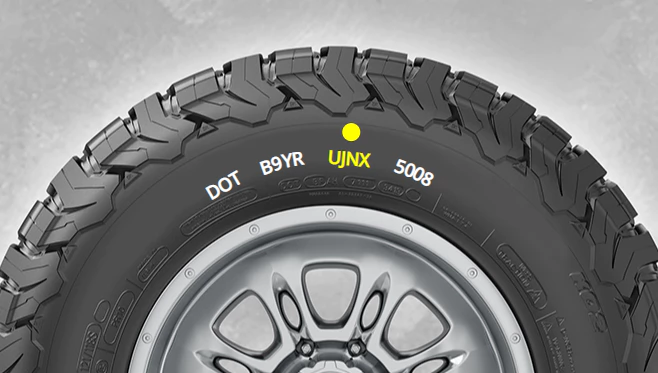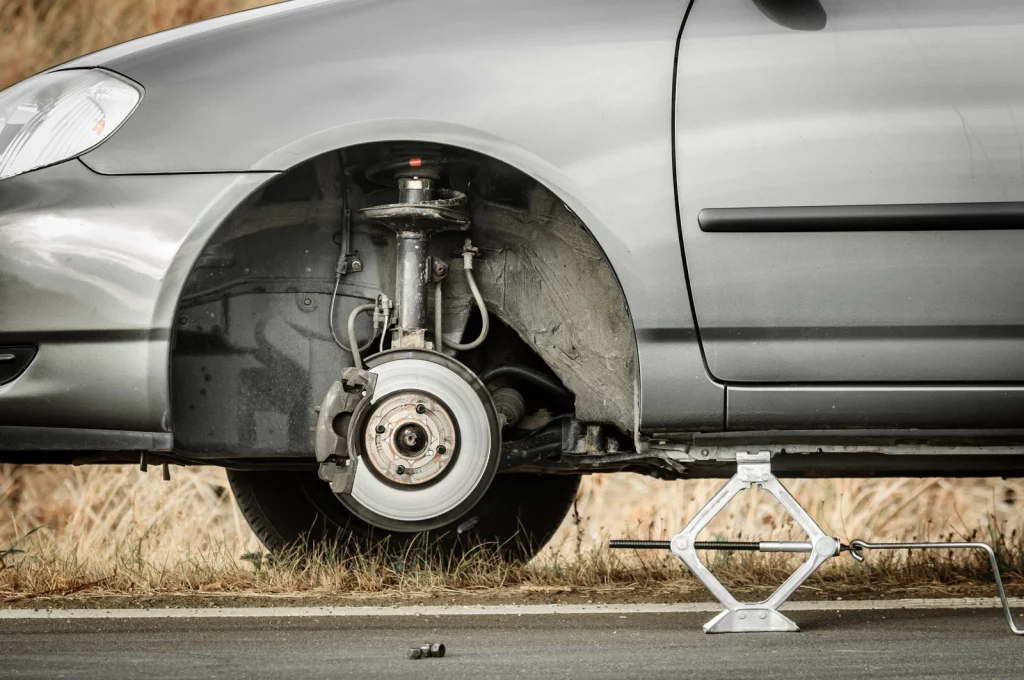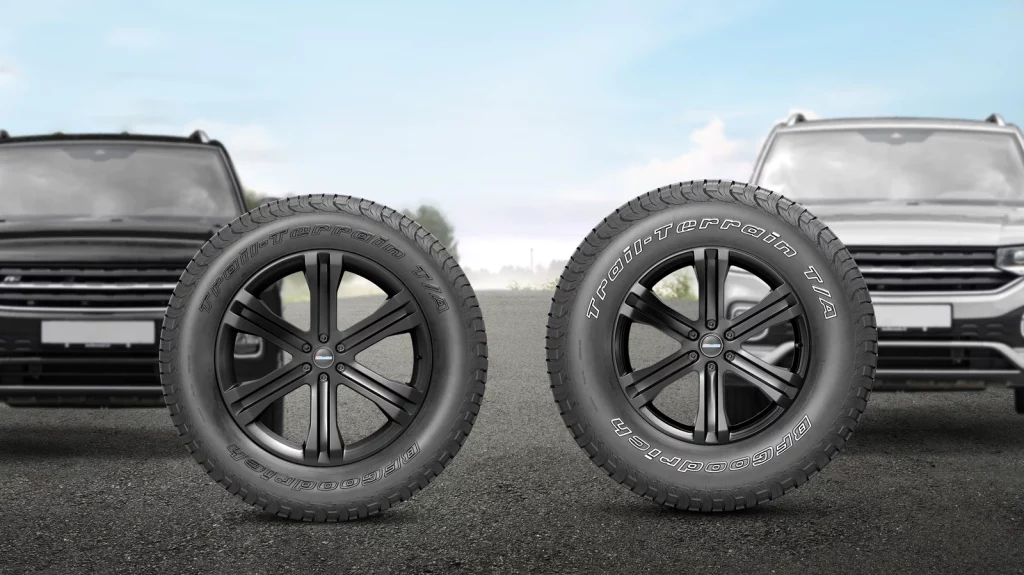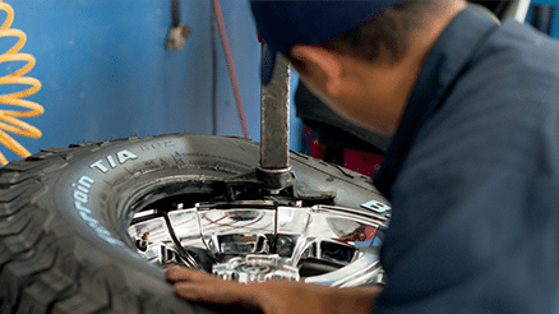Tire Basics
One of the most essential parts of your vehicle is the tires. These incredible pieces of technology are the only part of your vehicle that connects with the road and are highly engineered to support the entire weight of your car. The surface of the tire that touches the road is roughly the size of your palm and is called the contact patch. This contact patch is responsible for keeping you firmly planted on the road.
Because of the critical aspect tires play in our driving experience, you must understand the ins and outs of tires to ensure you buy the correct tires for your vehicle, accurately maintain your tires, and can handle every adventure going forward.
Learn everything you need to know about tires and how they impact your driving experience from BFGoodrich. How tires are made, tire speed rating, how to read a tire sidewall...we have it all!
Tire Anatomy & Tire Construction
There's a lot more to a tire than just rubber on a rim. The typical radial tire consists of six main parts.
Tire Speed Rating & Tread life
A through Z. Find out what rating offer longer mileage, better grip, and a smoother ride. The most common tire speed ratings, speeds and vehicle usage are as follows:
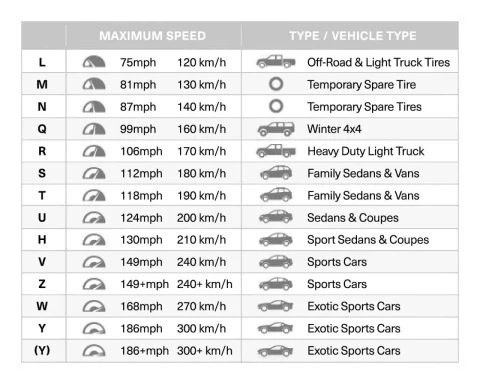
The Origin of Speed Ratings
We can thank Germany's famous Autobahn for tire speed ratings. Tire speed ratings range from A (the lowest) to Y (the highest). But the chart is not completely in alphabetical order. For example, H is between U and V, with the common perception that H stood for "high performance" at one time. As manufacturers continue to add speed to their vehicles, tire speed ratings evolve to match the speeds. For example, Z was the highest rated speed at 149+ until W & Y were used to match the higher speeds of exotic sports cars.
Speed ratings refer to more than just speed
Contrary to the name, speed ratings aren’t just about speed. They’re also about ride comfort, wear, and cornering ability. Typically, the higher the speed rating, the better the grip and stopping power, but the lower the tread life. You can always increase the speed rating of the tires on your vehicle for improved performance but can never decrease it without reducing the vehicle top speed to that of the lower speed rating selected.
Mixed Speed Ratings
We certainly don’t recommend it, but if tires of different speed ratings are mounted on a vehicle, the lower speed-rated tires should be placed on the front axle regardless of which axle is driven. This is to prevent a potential oversteer condition. Vehicle handling may be affected, and the vehicle’s speed capacity is now limited to the lowest speed-rated tire. For best performance, it is recommended that the same size and type of tire be used on all four wheel positions.
Load Index
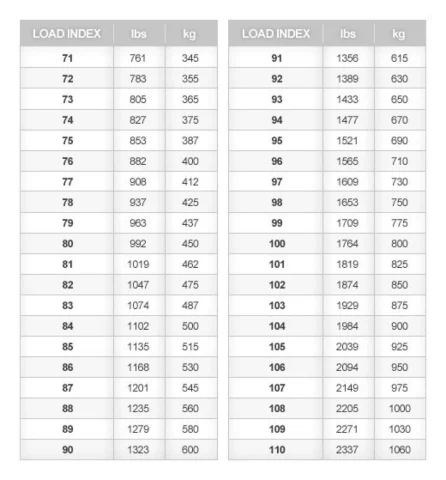
235/55R17 99H
The load index (99) is the tire size’s assigned numerical value used to compare relative load carrying capabilities. The higher the tire’s load index number, the greater its load carrying capacity.
97 = 1,609 pounds
98 = 1,653 pounds
99 = 1,709 pounds
A tire with the higher load index than that of the Original Equipment tire indicates an increase in load capacity. A tire with a load index equal to that of the Original Equipment tire indicates an equivalent load capacity. A tire with a lower load index than the Original Equipment tire indicates the tire does not equal the load capacity of the original.
Typically, the load indexes of the tires used on passenger cars and light trucks range from 70 to 110.
Reading a Tire Sidewall
The numbers and letter on the side of your tire have very specific meanings. A tire's sidewall is pretty much what it sounds like - the outer and inner "walls" on the sides of a tire, if facing a tire on its side. Every sidewall has its own unique information that is divided into four main sections:
Tire Specs
Department of transportation safety code
This assures that your tire complies with all Department of Transportation (DOT) safety standards. After the DOT insignia is your tire's identification number, which begins with the tire's manufacturer and plant code where the tire was manufactured (two numbers or letters). The ninth and tenth characters tell the week the tire was manufactured. The final number(s) signifies the year the tire was manufactured.
utqg code
The Uniform Tire Quality Grading (UTQG) was established by the National Highway Traffic Safety Administration (NHTSA) to test tires following government prescribed test methods and then grade each tire on three main components:
Treadwear: This is the wear rate of the tire, comparable only to other tires within a tire manufacturer's line. 100 is the baseline grade. Therefore, a tire with 200 would theoretically last twice as long on the government's course compared to a tire with 100.
Traction: Traction grades are AA, A, B and C (with AA being the highest grade). They represent the tire's ability to stop straight on wet pavement as measure on a specified government track. Any tire rater under C is considered unacceptable for road travel.
Temperature: The temperature grades, from highest to lowest, are A, B and C. These represent the tire's ability to dissipate heat under controlled indoor test conditions. Any tire rated below C is considered unacceptable.
icons
Some tires have unique benefits, as showcased with specific icons. For example, a Mountain Snowflake symbol tell you that the tire meets or exceeds industry-established snow traction performance requirements.
The Right Tire for your vehicle
To find out what tires are right for your car, check your vehicle's OEM door sticker or your vehicle's owner's manual.
Tire Size
OEM stands for Original Equipment Manufacturer. Quite simply, these are the tire specs that originally came with your vehicle, according to the manufacturer (Honda, Ford, etc). It includes the tire size, rim size, the aspect ratio, etc.
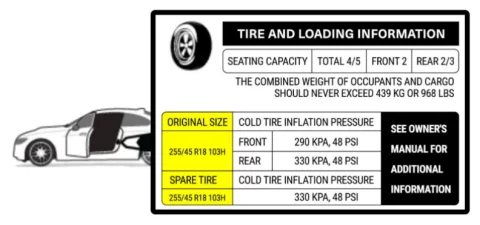
Tire Pressure
The correct tire pressure to inflate your tires can be located on the vehicle or tire placard or Vehicle Owner's Manual and is the proper tire pressure to maintain, so your tires can give you the maximum performance, including gas mileage and tread life. For proper results, make sure your tires haven't been driven for three hours before you check for air pressure. (Friction creates heat, which increases tire pressure and gives improper readings.) Be aware that the air pressure displayed on the tire sidewall is the maximum pressure, not the recommended tire pressure.
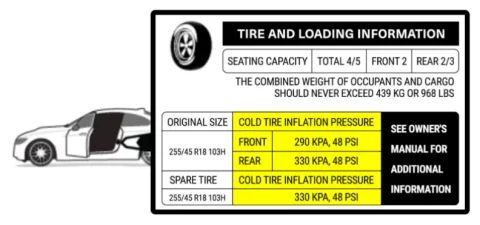
NEED MORE HELP TO PLAN A TRIP
Our Trip Planning section gives lots of helpful information to get you started.






